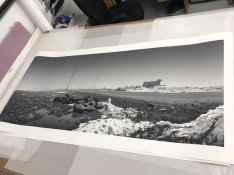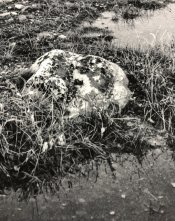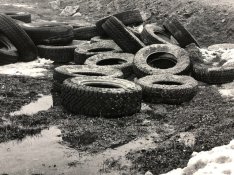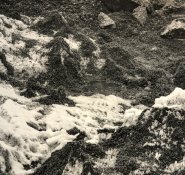Peter,
There is no direct correlation between specific negative density values and print tones. The negative is the intermediate step between the subject and the print. The idea is to record the luminance values of the subject in a way that produces a print that is regarded as having good quality. Generally that means developing the film to where the resulting negative density range will fit on the paper's Log Exposure Range (LER). Exposure places the camera image of the subject Luminance range on the film where the is sufficient separation of the values. Loyd Jones determined that one of the factors that determines a quality print is tonal separation in the shadows. This point has a gradient of 0.3 times the overall gradient of the film Below this point, quality drops off. Above this point, there is no significant drop in quality for a number of stops and then other factors, such as higher grain and reduced sharpness, begin to influence quality. The amount depends on the film format and degree of enlargement. That means 35mm will have the least amount of tolerance to additional exposure.


The statistically average scene is 7 1/3 stops or 2.20 logs. This does not include accent black or specular reflections. By placing the shadow exposure as low on the curve as possible while keeping it above the minimal useful gradient, sharpness is maximized and grain minimizes. Plus printing times are lower. Printing times, as well as sharpness and grain, increased in importance as smaller formats became increasingly popular. Without the limiting factors, theoretically an exposure could be placed anywhere there on the film where there is a sufficient gradient. This means anywhere between the limiting shadow gradient in the toe of the film and a limiting gradient in the shoulder of the film. If there are 10 stops between these two points and the film has a 7 stop range, that gives a 3 stop exposure latitude. The 7 stop exposure can be placed anywhere within these ten stops and still have good reproduction of tones. This is where the 19 stop range of TMX comes in. For the 7 stop scene, the TMX film would have an exposure latitude of 12 stops.
D. Connelly has an excellent definition of exposure in his paper
Calibration Levels of Films and Exposure Devices. "The validity of the exposure determination method must, therefore, depend upon the ability of the resulting photographs which are produced by substituting a single value of luminance determination of exposure to represent the multiplicity of values of luminance of the scene itself. From the point of view of the film, satisfactory photography depends upon the proper location on its exposure density characteristic of the densities produced by the image illumination within the camera. The greatest and least significant luminances in the scene are required to cause exposure of the film within the usable part of its exposure density characteristic. This implies that the most important characteristics of the luminance are:
1. the ratio of its maximum to it minimum value
2. its absolute value of maximum or minimum.
For the former determines whether or not the film can reproduce the contrast range of the scene and the latter determines the exposure time necessary to provide an exposure which will locate the brightness scale o0f the scene correctly relative to the film characteristic."
When making an exposure, you can only use a single shutter speed and f/stop combination. This means only a single point of exposure can be known and determined. The rest is assumed. It's sometimes called place and fall or peg and fall. According to Jack Holm, "the mean log luminance of a statistically average scene is approximately 0.95 log units below the highlight log luminance and 1.25 log units above the shadow log luminance." This is the assumption for the exposure placement that the ISO speed rating is based upon. But what if the scene isn't statistically average? What if the shadows aren't that deep or are deeper. Some will say that is where spot metering and systems like the Zone System come in. They remove the assumption of the range of the shadows.
The current ISO speed method allows for approximately a 1/3 stop safety factor based on the above assumption. An average flare factor of one stop increases the potential safety factor but flare is inconsistent from subject to subject. A scene with zero or low flare will result in the shadows falling at or near the limiting gradient point in the shadows. Some people don't like having their exposure so close to the minimal point, so they apply an additional safety factor, which is simply compensated for in the printing if necessary.
There is nothing wrong with this. Before the 1960 change in the b&w film standards, film speeds were 2/3 to one stop slower for a given film. This was the result of a different way the speed was calculated. A safety factor was incorporated into the speed rating because of the lack of people owning meters and the inefficiency of the meters that existed. So reducing the speed rating of a film by 2/3 stop only brings it into agreement with the pre 1960 speeds. It doesn't adversely affect quality in most cases.
To be clear, the above graph is an evaluation based on the pre 1960 speed method which was a time when lenses had a higher flare factor. For reference, the graph below reflects the post 1960 standard and less flare. Please note the difference between (5) Statistical Average scene and equivalent grey calibration surface for photoelectric reflected light meters and (4) Fixed density film speed computation point.
And the next graph compares the ratios of the Zone System and ISO speed point and the metered exposure point. The lxs values are for 125 speed film. 0.8 / 125 = 0.0064 lxs. This is where the 2/3 stop discrepancy between ISO and Zone System speed comes from.







